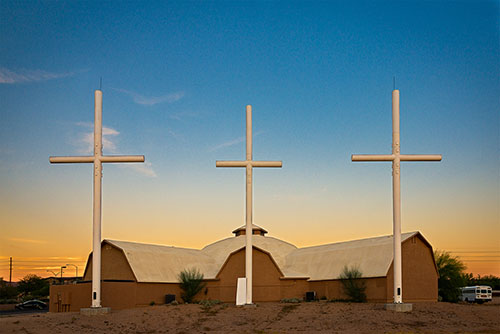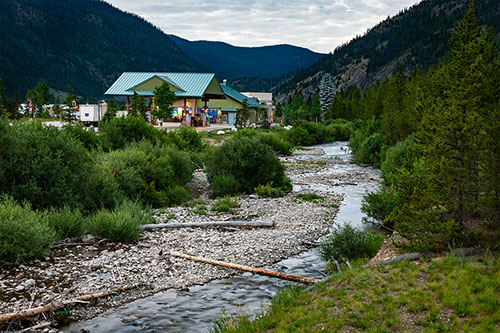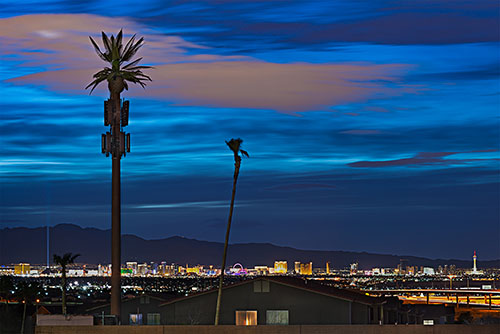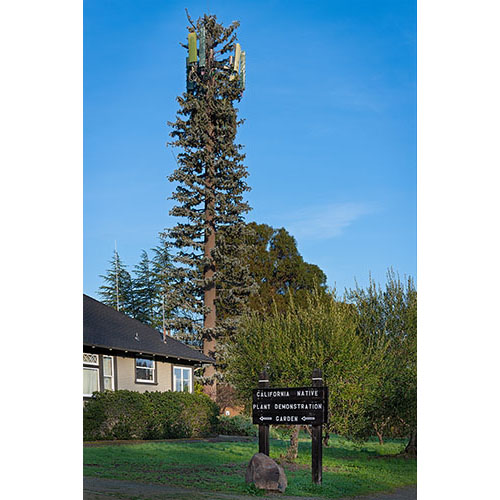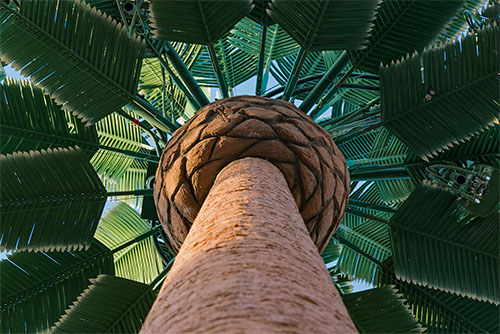Exploring the intersection of the built and natural world
Fauxliage: Disguised Cell Phone Towers of the American West (2014 - ongoing)
Fauxliage documents the proliferation of disguised cell phone towers in the American West. By attempting to conceal an unsightly yet essential technology of the modern world, our landscapes are now sown with a quirky mosaic of masquerading palms, evergreens, flagpoles, crosses, and cacti. But the towers are simulacra. They are water towers that hold no water, windmills that provide no power, and trees that provide no oxygen; yet they all provide five bars of service.
The often-whimsical camouflage belies the cellular equipment's covert ability to collect all the personal data transmitted from our cell phones. Big tech and the government are always listening, storing, buying and selling our harvested information. Surveillance capitalism is big business in the internet age.
The faux trees pose an environmental concern. As the trees age, the plastic needles and fronds breakdown and litter the ground beneath the trees. What started as an attempt to reduce visual pollution is now creating plastic pollution.
I traveled to ten western states to photograph the variety of concealments. The towers pose the question: how much of an ersatz landscape and manufactured nature are we willing to accept in exchange for connectivity?
As the fifth generation (5G) of cellular technology continues to roll out, new cell towers will be smaller and more inconspicuous, often discreetly integrated into the tops of streetlight poles. Perhaps elaborately disguised “fauxliage” towers will start disappearing and be considered an anachronism of the early 21st century. The decorated towers could join drive-up photo kiosks, phone booths, newsstands, and drive-in movie theaters as architectural relics of the past. Coincidentally, those functionalities are all standard capabilities of our cell phones, now held in the palms of our hands.
A monograph of my Fauxliage images, published by Daylight Books, is now available.
"What would the Bechers have done with this subject? There is too much variety,
too much wildness to control here. I imagine they might have walked away. But not Annette. . . . Fauxilage presents a
landscape like no other."
– Ann M. Jastrab, Executive Director, Center for Photographic Art, Carmel, CA
"Here, we enter a kind of uncanny valley as symbols of worship take on a surveillance role,
transmitting not only our thoughts and prayers, but our data and location. . . . Fauxliage, as the artist calls it,
is the ghillie suit of surveillance culture, and Burke’s observations of these poorly concealed observers is canny,
occasionally funny, and ultimately rather ominous."
– Sarah Rose Sharp, Hyperallergic
"Annette LeMay Burke, whose wonderfully off-beat landscapes document the many cell phone towers disguised as trees
that can be found all across the American West and stand as palpable reminders of the lengths we are prepared to go to
support this technology that has taken over our everyday lives."
– Karen E. Haas,
Lane Senior Curator of Photographs,
The Museum of Fine Arts, Boston, MA
"She presents her viewers with beautiful images of charged objects with which to reflect
on our own engagement with our modern digital systems."
– Bree Lamb,
Fraction Magazine




